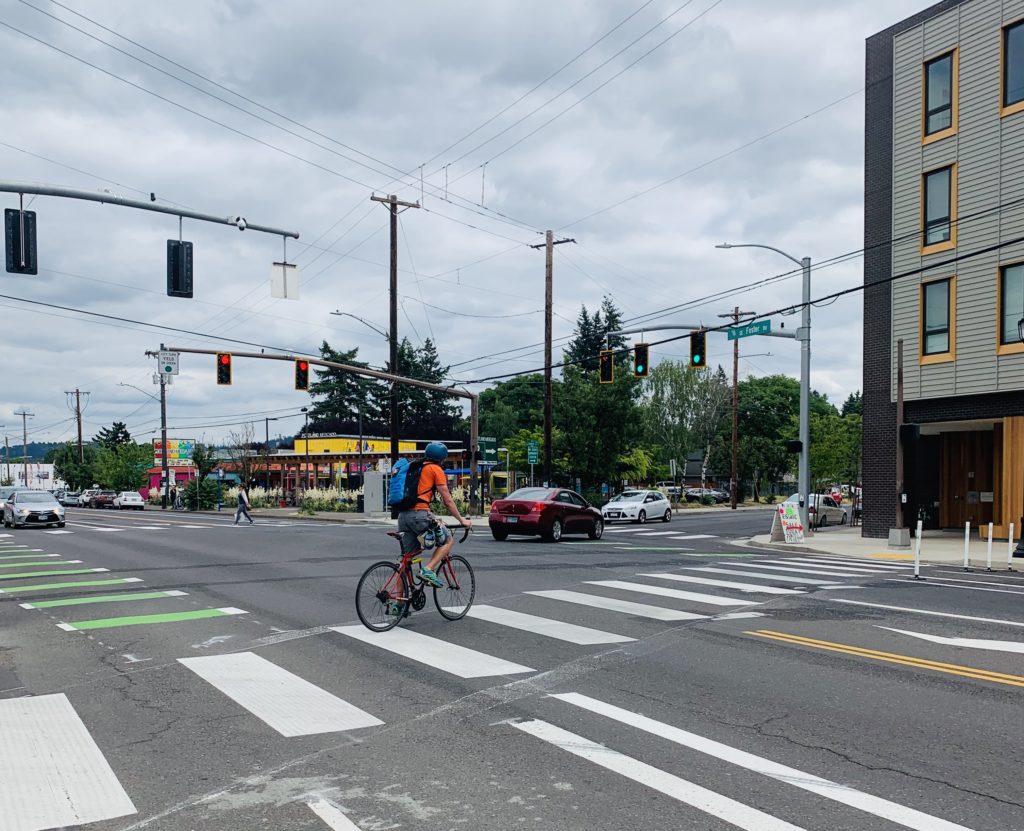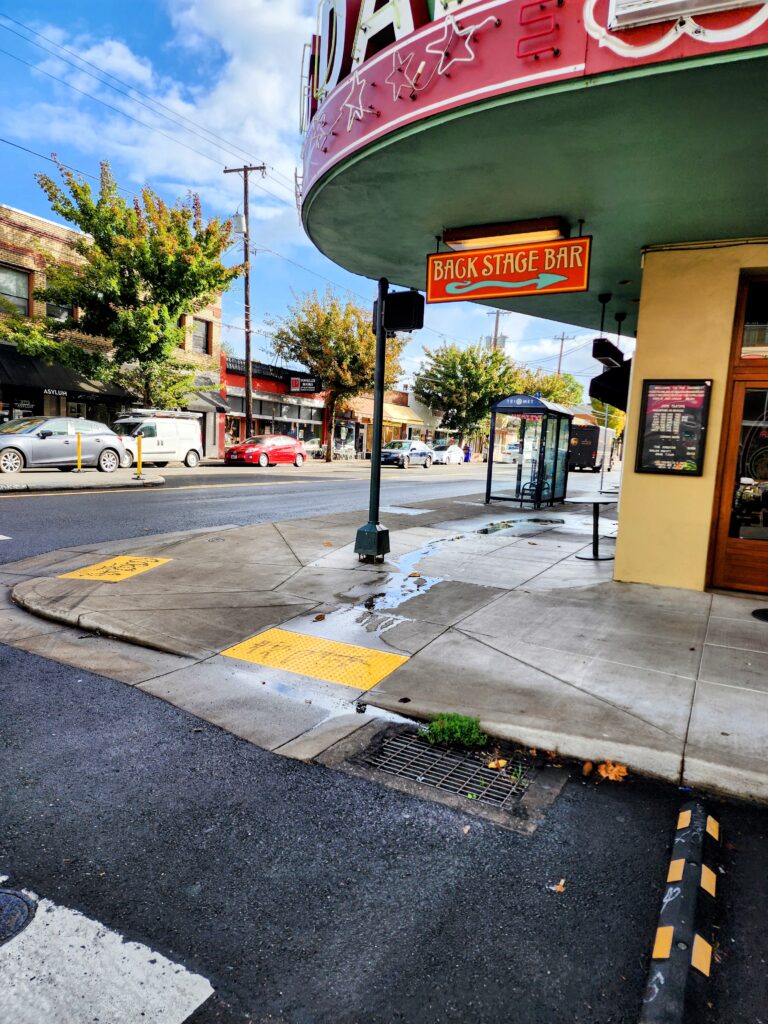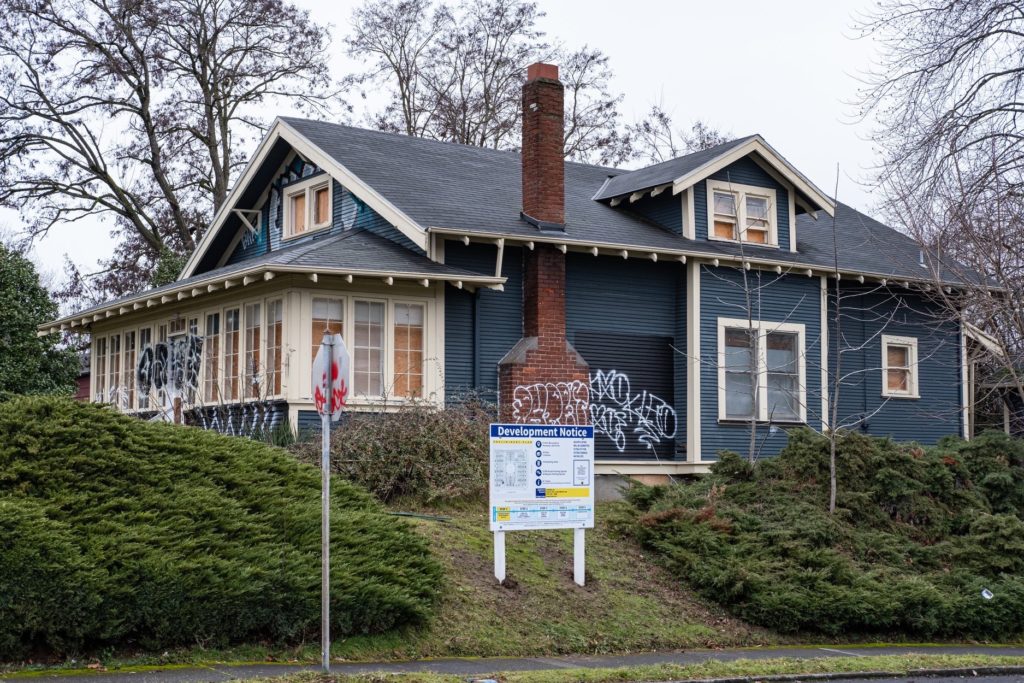


Commonly Asked Questions from Neighbors
Below are the most commonly asked land use and transportation-related questions I get from neighbors in the SE Uplift community. Review your question and answer and contact SE Uplift if you still have questions or want to discuss your inquiry further.
Most trees require a permit for removal, and larger trees often face strict restrictions or incur large fees. To better understand your tree’s situation, visit the Urban Forestry’s website for information on tree removal or trimming.
Yes, please do! Portland is actively expanding its urban canopy of trees due to the numerous benefits tree offer. The City provides free and subsidized trees through various programs and partnerships with non-profits like Friends of Trees.
Trees enhance biodiversity, reduce demands on stormwater infrastructure, purify air, can slow down traffic, mitigate disparities in firearm violence exposure, lessen the urban heat island effect, and create neighborhood beautification. For information about tree planting resources, visit the Urban Forestry website.
Once someone submits a demolition application to the Portland Bureau of Development Services (BDS), there is an automatic 35-day delay before issuing a permit. If you live within 150 feet of the demolition site, BDS should send you a notification letter within 5-7 days after the application date. If you do not receive proper notification, contact BDS at 503.823.7300 to record a complaint of noncompliance. For information on permits issued for properties, visit Portlandmaps.com. Click on the “permits/cases tab” or go to the “gallery” and select “Residential Demolitions” for a citywide map.
The City mandates that most residential structures built on or before 1940 undergo deconstruction instead of mechanical demolition. This practice allows for material reuse and better abatement of toxic building materials. Learn more at deconstruction requirements.
During the 35-day delay, the demolition contractor must conduct asbestos and lead-based paint surveys. You can request to see the survey results from the contractor. If the results are unavailable, call BDS to file a complaint. You can also contact OSHA at 503.229.5910 and the Construction Contractors Board (CCB) at 503.934.2229 to demand immediate resolution of noncompliance and availability of the surveys.
If surveys detect lead or asbestos, you can request the abatement plans. If the owner/contractor does not comply, use the same channels as for the surveys, including contacting OSHA and CCB. Additionally, you can contact the Department of Environmental Quality (DEQ) at 503.229.5982 for asbestos abatement notices and the Oregon Health Authority (OHA) at 971.673.0440 for lead abatement notices. If abatement is not registered with either agency, request an immediate hold on permit issuance by BDS until hazardous materials issues are resolved.
The best way to protect yourself during a neighboring demolition is to determine whether the home or duplex will be deconstructed or mechanically demolished. Deconstruction of structures prevents toxins from being released in the air unlike mechanical demolition. If the structure will be demolished you should get a notice at lease 5 days before any demolition activity. Contact BDS if this does not occur. Cover all vegetable gardens and children’s play equipment with plastic and close all windows and doors within 300 feet of the site. If the structure and debris are not kept wet by the contractor to minimize dust. If you have severe health conditions, you may choose to leave the property during the demolition if possible.
For more information, review the “what are my rights” in the tab above.
The most effective way to prevent the demolition of a culturally or historically significant structure in your neighborhood is to know your neighbors and inform them of your interest, or someone you know, in buying the property should they decide to sell. People sell their homes for various reasons, which is their right. However, establishing connections with your neighbors and expressing your interests can effectively prevent selling to a third party who plans to demolish the property.
If you learn about a pending demolition through a mailed notice, word of mouth, or by checking demolition permits in the “gallery” section on PortlandMaps.com, you or a group can potentially stop the demolition after a permit is issued by appealing it. The process outlined in the demolition notices involves an appeal fee and requires justification for preserving the structure. Ultimately, purchasing the home at the market rate from the current owner is necessary. Although challenging, this has been successfully achieved before.
Development occurs at various scales across our neighborhoods. While small alterations may not require permits, larger additions and alterations often can. For permitting, code, and zoning questions, check with Development Services.
Larger developments will activate the City’s Neighborhood Contact requirements. Depending on the project size, this may involve:
– Notifying the neighborhood association, district coalition, business association, and school district about the project;
– Posting a sign on the site; and/or
– Holding a public meeting.
The project’s details will appear on the large sign posted on the property. Feel free to contact the developer for questions or to find out about scheduled public meetings where you can provide feedback and ask questions. Remember, in many cases, development is a right allowed in City Code, so the more respectful and earlier your communication and requests are, the more likely your considerations will be included in the design and build.
Note that the neighborhood contact process happens BEFORE the formal application process starts with the Bureau of Development Services. Therefore, if you contact BDS with questions, they might not have information about this project. Find more information here.
The Portland Bureau of Transportation (PBOT) is responsible for planning, building, managing and maintaining an effective and safe transportation system that provides people and businesses access and mobility at the local level. Most roadways, sidewalks and parkways in our neighborhoods are owned by PBOT. More information here.
TriMet is the regional transportation agency that builds, manages, and maintains regional transit facilities like our light rail and bus systems. They are responsible for operations of our transit system and any associated facilities. More here. TriMet builds and operates the regional system that is planned and approved by Metro.
Oregon Department of Transportation (ODOT) is responsible for planning, building, managing and maintaining our state-wide transportation facilities. ODOT Region 1 serves Portland and the surrounding area and is responsible for some of the major roads traveling through Portland (e.g. Powell Blvd, McLoughlin Blvd, et al) in addition to the Interstate system (e.g. I-205, I-405, I-5, et al). More information here.
Multnomah County maintains several bridges over the Willamette in Portland, although not all, over 260 miles of roads and nearly two dozen smaller bridges throughout the county.
Each agency works independently and collaboratively to manage our transportation system. Understanding what agency has ownership over the roadway, sidewalk, or facility you are interested in is important since each has its own set of rules, priorities, decision-makers, and funding streams.
You can go to PortlandMaps.com and type in your address to understand the current allowed uses for a property. The zoning description for your property is just a starting point. There may be unique characteristics about the property that might further restrict what you can do, such as if your lot is a bit smaller than 5,000 square feet, if it’s within a Historic District, or if there are large trees on the site. These may require further investigation.
You can speak with the Bureau of Development Services to ask property-specific questions at 503-823-7526. This is a good resource for general zoning and property information or process related questions.
The best way to connect with your neighborhood association is to go to the Neighborhood Directory to find contact information and visit the neighborhood association website listed there. All neighborhood associations are run by volunteers and are eager to connect with you when they are able to. If you are not hearing back, it is likely these amazing volunteers are short-handed. In that case, you can call or email your district coalition office (e.g. SE Uplift Neighborhood Coalition) to determine the best way to connect with a neighborhood association.
The Community Alliance of Tenants (CAT) is Oregon’s only statewide, grassroots, tenant-controlled, tenants’ rights organization in Oregon, dedicated to educating, coordinating, and developing the leadership of low-income tenants. CAT stands out as an exceptional resource for renters seeking information about their rights. It’s also an ideal organization for social justice-minded individuals or groups eager to support tenant causes. CAT has played a pivotal role in numerous city and statewide tenant protection initiatives. These include capping annual rent increases, ending no-cause evictions, and safeguarding tenants from unfair screening and security deposit practices.
The Fair Housing Council of Oregon promotes justice, equity, and inclusion in housing across Oregon. This includes a focus on protecting and advocating for renters’ rights across the state. They provide crucial assistance to renters facing illegal housing discrimination, offering support, education, and resources. The organization actively works to ensure justice, equity, and inclusion in housing, helping renters overcome fear and challenges related to discrimination in the rental housing market.
The Portland Housing Bureau provides local and statewide resources for landlords and tenants. Find tools, links, and agencies you can contact for help on their website here.
SE Uplift provides a Land Use & Transportation Bulletin summary of project and policy updates inthe district that you can sign up for here.
The best way to stay in tune on specific projects or topics of interest is by signing up for each projects’ “listserv” or email updates. This can be done by searching the project and adding your name to the list on the project page.
Active land use projects are listed in detail on the Portland Map App. Neighbors can learn about the project and in most cases make public comments during open public comment periods.
A monthly snapshot of land use planning work going on in your neighborhood is updated monthly and available on the Planning & Sustainability News site here.
Land Use & Transportation Development Resources
Portland Maps: View maps from the City of Portland with zoning, permit, and demographic information about crime, schools, parks, properties, transportation, the environment and more.
BPS Map App: Future plans and policy that impact land use. Projects are typically under review and public can make comments through this site during open comment periods.
Next Portland: Writes about large projects and major alterations happening in Portland that are in the design phase or under construction.
Other Resources: Explore other resources available to our Land Use & Transportation Representatives. Nerd out here!
We are here to help:
If you have questions or concerns about land use decisions, Bureau meetings, notices, planning efforts, or demolitions, please contact us for assistance.